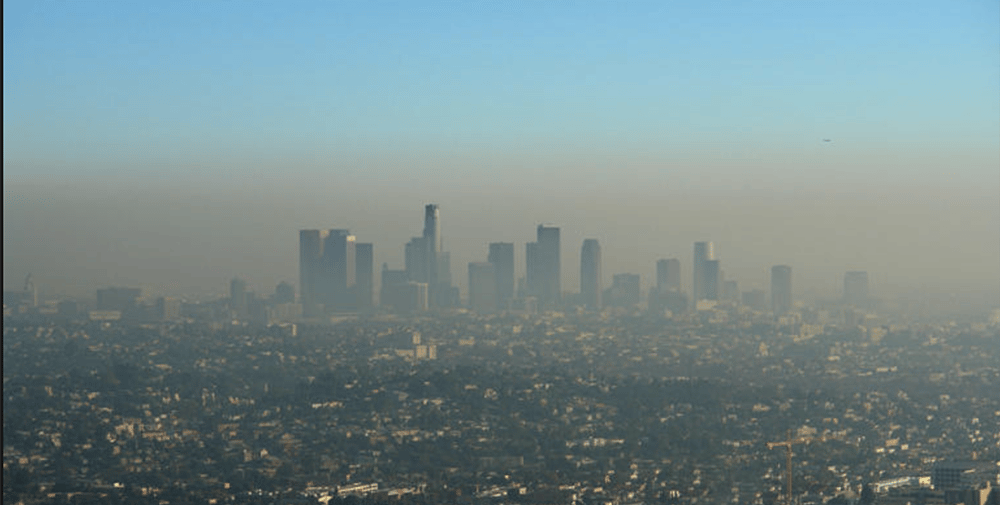America’s Air Crisis: Why Nearly Half of Us Are Breathing Toxic Air
4/27/20253 min read


America’s Air Crisis: Why Nearly Half of Us Are Breathing Toxic Air
Imagine stepping outside your home, taking a deep breath, and unknowingly filling your lungs with pollutants that could shorten your life. For 156 million Americans—46% of the population—this isn’t a hypothetical scenario but a daily reality. The American Lung Association’s 2025 “State of the Air” report reveals a staggering truth: nearly half of the U.S. population lives in areas with failing grades for air pollution. From smog-choked cities to wildfire-ravaged regions, the air we breathe is getting worse, and it’s time we pay attention.
A Failing Grade for Clean Air
The annual “State of the Air” report, based on 2021-2023 EPA data, paints a grim picture. A record 156 million Americans live in areas with unhealthy levels of ozone or particle pollution, a jump of 25 million from last year. That’s nearly half the country breathing air that can trigger asthma attacks, heart disease, strokes, lung cancer, or even premature death. The culprits? Extreme heat, drought, and wildfires, all supercharged by climate change, are pumping dangerous pollutants into our skies.
Katherine Pruitt, the American Lung Association’s Nationwide Clean Air Policy Senior Director, told NBC News, “We’re seeing a backslide in air quality measures that we haven’t seen in decades.” This isn’t just a statistic—it’s a public health crisis.
Who’s Hit Hardest?
Air pollution doesn’t affect everyone equally. Communities of color bear the brunt, with Hispanic Americans nearly three times as likely to live in areas failing all three pollution measures (ozone, short-term particle, and long-term particle pollution). Low-income neighborhoods, often near industrial zones or highways, face higher exposure to toxic air. It’s no coincidence that these communities also have higher rates of asthma and other respiratory illnesses.
Take Los Angeles, for example, which consistently ranks among the worst for ozone pollution. Or Fresno, California, choked by wildfire smoke and agricultural emissions. These aren’t just numbers on a map—they’re families, children, and seniors struggling to breathe.
Why Is This Happening?
The surge in air pollution is tied to a perfect storm of environmental and policy challenges. Climate-driven wildfires, like those that blanketed the West in smoke in recent years, release fine particulate matter (PM2.5) that can penetrate deep into the lungs. Extreme heat worsens ozone formation, creating smog that lingers over cities. Meanwhile, proposed EPA rollbacks under the Trump administration threaten to weaken air quality regulations, potentially making a bad situation worse.
Only two areas—Bangor, Maine, and San Juan, Puerto Rico—earned the title of “cleanest” in the report. For the rest of the country, the outlook is troubling. If we don’t act, the number of people breathing toxic air will only grow.
What’s at Stake?
Dirty air isn’t just an inconvenience—it’s a killer. Particle pollution, tiny specks smaller than a human hair, can lodge in your lungs or enter your bloodstream, increasing the risk of heart attacks and strokes. Ozone, a key component of smog, irritates airways and worsens conditions like asthma. For kids, whose lungs are still developing, and seniors with weakened immune systems, the risks are even higher.
The health costs are staggering. The American Lung Association estimates that air pollution contributes to millions of asthma attacks and thousands of premature deaths each year. Beyond health, there’s an economic toll—hospital visits, missed workdays, and reduced productivity add up to billions of dollars annually.
What Can We Do?
The good news? We’re not powerless. Cleaner air is achievable, but it requires action at every level. Here are a few steps we can take:
Support Stronger Regulations: Advocate for tougher EPA standards on emissions from vehicles, power plants, and factories.
Invest in Clean Energy: Transitioning to renewables like solar and wind reduces the fossil fuel emissions driving pollution.
Protect Vulnerable Communities: Prioritize air quality improvements in marginalized neighborhoods.
Act Locally: Use public transit, carpool, or bike to cut down on vehicle emissions. Support tree-planting initiatives to filter pollutants.
Individuals can also check their local air quality index (AQI) on sites like AirNow.gov and limit outdoor activity on high-pollution days. Small actions add up.
A Call to Breathe Easier
The “State of the Air” report is a wake-up call. Nearly half of us are breathing air that’s making us sick, and the problem is getting worse. But this isn’t just about statistics—it’s about the health of our families, the future of our planet, and the kind of world we want to leave behind. Clean air isn’t a luxury; it’s a right. Let’s demand it.
Thought Questions:
How does air pollution affect your community, and what local actions could improve air quality?
Should the government prioritize air quality regulations over economic growth, or is there a way to balance both?
What steps can you take in your daily life to reduce your contribution to air pollution?
Photo Credit:MSN.com
hello@boncopia.com
+13286036419
© 2025. All rights reserved.